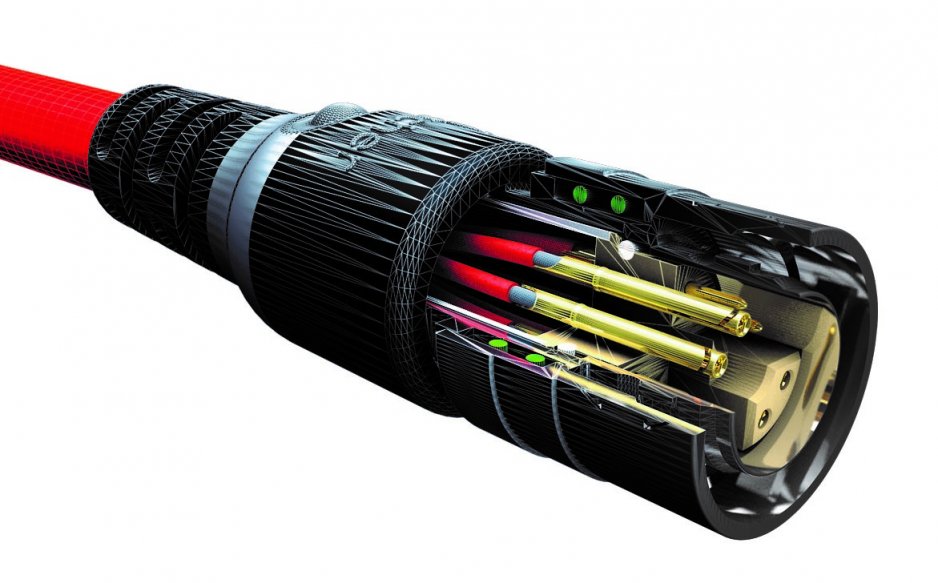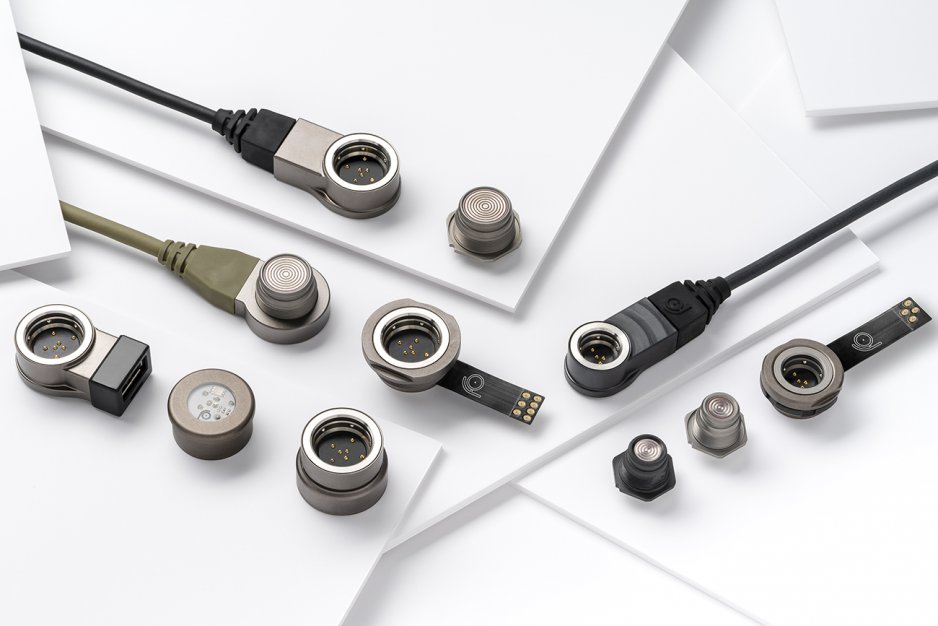In all branches of industry, efficient operations stand or fall by the quality of their connection technology. After all, the basic requirement for smooth processes is that data is exchanged reliably between machines. However, since the sensors used for this purpose are becoming ever smaller, connection technology also has to be suitably miniaturized – and yet sufficiently robust to ensure that data transmission remains stable despite vibrations.
Connectivity in industry: from requirement fulfiller to design enabler
August 19, 2021 · 6 min readIn addition, there is growing demand for connectors featuring modularity and multifunctional integration capability, especially for industrial wearables. New solutions are called for to meet users’ needs in terms of safety, robustness, miniaturization and functionality.
Reliable measurement data for efficient operations
Reliable measurement data are essential if systems and machines in robotics, medical technology or the automotive industry are to operate safely and efficiently. Values that provide information about the forces and torques acting on machine axes are particularly important. This is the only way of ensuring safe, precise operations. One proven method for obtaining reliable results is strain gauge technology. For this purpose, several, for example six, independent strain gauge sensors are often combined (see photo below). These are equipped with strain gauges in full-bridge configuration. Based on the six sensor signals, the forces in the three axes of the space as well as the three moments around these axes are precisely determined according to a calculation rule. In recent years, requirements for precision in measurement and sensors’ reaction times have increased continuously.
In practice, analog technologies are mostly used because they offer a huge speed advantage when converting signals: as well as high precision, they can also achieve very short response times. This is essential, especially for fast machine processes and robots. The sensors have to transmit the sensitive, small analog signals from the process to the control computer faster and faster. This is a major challenge, especially for sensors with small mechanical proportions and several integrated dimensions, particularly for the connector between the sensor unit and the transmission. The junction between the connector and the sensor is the most critical in the entire system. Machine vibrations or movements at the solder joints can cause the connection to come loose. This leads to errors in the measurements and, in the worst case, to machine downtime until the problem is fixed. Such effects have to be avoided at all costs.
Little space, many contacts
The connection situation is particularly critical for force-torque sensors. In these, a total of 24 contacts (6×4) are required to connect the strain gauges. Due to increasing miniaturization, the connectors have to be very small and, at the same time, powerful. Until now, reliable transmission of strain gauge signals has only been possible using one connector per strain gauge. Therefore, the challenge for force-torque sensors is to integrate all 24 contacts into one connector. At the same time, the connectors’ weight needs to be reduced to ensure maximum contact reliability even with high accelerations and vibrations. Technically it would be feasible to integrate the electronics into the sensor and thereby reduce the number of contacts. However, in this case the same performance characteristics would not be achieved as with an external electronic component.
This calls for very powerful connectors. Cable assembly also plays a major role here. Multiple potting of the individual strands and overmolding of the cable sheath using special molding technologies eliminate changes in resistance, such as those caused by vibrations and cable movements. The cable from the sensor to the amplifier has to demonstrate stable resistance behavior under thermal and mechanical stress, which is usually achieved through a drag-chain-compatible cable design and enhanced by the molding process on the connector. All in all, this results in very high vibration resistance.
Since time matters a lot in industry, it is important that cables can be connected and disconnected reliably under time pressure. This leads to considerable time savings for service technicians during assembly, installation and service, such as when calibrating the system. Moreover, depending on the application, it is necessary for the connectors to be resistant to liquids. IP68 has a proven track record in industry.
Smart connectors
On top of the higher requirements in the field of robotics, the trend towards industrial wearables, such as intelligent work vests or wearable measuring devices, also presents development engineers with new connectivity challenges. Even as they shrink in size, devices are becoming increasingly powerful and should allow for more versatile use. At the same time, they have to be robust and of high quality, plus have a secure power supply and data connection at all times.
Unlike fixed machines, the connections of mobile and flexible applications are plugged in and unplugged very frequently. Connectivity solutions therefore need to be as simple as possible to operate and should not cause any cable tangles. Connectors with male plugs and female receptacles are at a decisive disadvantage here: they always require a precise, predefined mating process. The smaller the devices are and the more frequently they have to be mated and unmated, the more important the criterion of ease of mating becomes.
Components without coding offer advantages when it comes to field use. Such components have a sealed, non-magnetic quick-release mechanism that operates with a predefined low force. This means they can be blind mated, eliminating the problem of mating precision, as well as the risk of misuse. They can therefore also be placed in locations where conventional connectors would be unsuitable. Solutions with optimized cable management, which prevent cable clutter and thus avoid hindering the user at work, are particularly useful.
In addition to easy mating, multifunctionality and integration capability are also becoming ever more important. Modern connectors are increasingly turning into versatile technology platforms. These serve as enablers for wearables and connected Internet-of-Things and Internet-of-Humans (IoT/IoH) ecosystems. Both engineers and end users benefit from easy-to-use plug-and-use technologies. Multiple configuration options simplify application design. Panel connectors can easily be extended to multifunctional wearables like biometric sensors, communication systems, GPS, lighting and bodycams. These can quickly and easily be snapped onto the cabled connector, integrated into flexible structures such as ready-to-use smart PPE vests.
Connectors without key codes are also particularly beneficial here. These can be plugged in any position, optimizing cable routing and power management. Here, too, dimensioning plays a decisive role; flat designs allow easy integration into any type of application, for example smart work vests. Since wearables are mostly used outdoors, they need to be cleaned regularly. This also applies to the connectors inside them. It is therefore useful if both plugs and receptacles are IP68 sealed even unmated. On the one hand, this protects the contacts from liquids, and on the other, the connectors can be fully cleaned. With modern, multifunctional connectors, mobile workers benefit from lightweight equipment without cable clutter, fast and intuitive setup, easy handling and cleaning, reliable connectivity and fast data transmission for enhanced safety and performance.
More than just connectors
Whether in robotics or wearables, connectors are now far more than a simple means to an end. They play a key role in transmitting data and in developing wearables.
Connectors often have to be developed or modified specifically for a given application. That is why connectors have become high-tech components that are making their contribution to technical progress in industry.
Martin Wimmers, Managing Director, Fischer Connectors GmbH, Germany
In recent years, requirements for precision in measurement and sensors’ response times when measuring force moments on the axes of machines have increased continuously. Picture: ME-Meßsysteme’s K6D sensors with the Fischer MiniMax™ Series.
Multiple potting of individual strands and overmolding of cable sheaths using special molding technologies eliminate changes in resistance, such as those caused by vibration and cable movements. Picture: Fischer MiniMax™ Series
This may be of interest to you
Harsh-environment connectivity solutions for Unmanned Aerial Vehicles
July 29, 2021 · 4 min read



